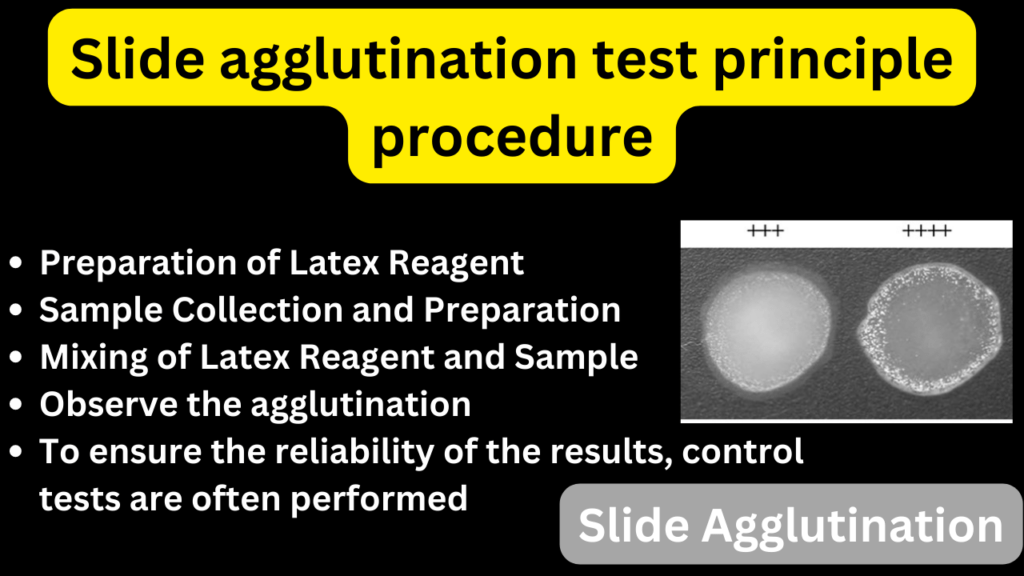The Slide Agglutination Test is a widely used technique in microbiology that leverages the principles of antigen-antibody interactions for the rapid detection of specific substances in the samples.

Slide Agglutination Test principle
Latex particles coated with specific antibodies or antigens are mixed with a sample. If the sample contains the matching antigen or antibody, clumping (agglutination) occurs on a glass slide.
Slide Agglutination test procedure
- Preparation of Latex Reagent: If the reagent is not prepared then latex particles are mixed with specific antibodies or antigens specific to the target substance.
- Sample Collection: The sample (such as serum, blood, or other bodily fluids) is collected.
- Mixing of Latex Reagent and Sample: Now add a small volume of the prepared latex reagent is mix it with the sample on a glass slide. The mixture is gently agitated to ensure thorough interaction between the sensitized latex particles and the target antigen or antibody in the sample.
- Agglutination is observed directly on the glass slide under a macroscopic examination.
Result Interpretation
- Agglutination indicates a positive result in the presence of the target antigen or antibody.
- The negative result shows no agglutination.